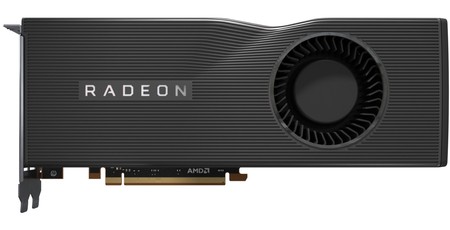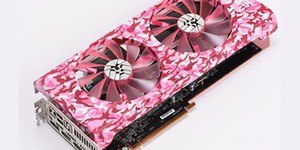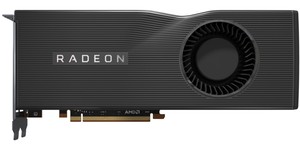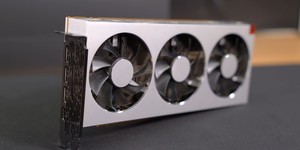
AMD has officially announced its next-generation Radeon RX 5700 and Radeon RX 5700 XT graphics cards, based on the Navi architecture, alongside the long-rumoured Ryzen 9 3950X 16-core 32-thread (16C32T) central processor.
Unveiled during a presentation at the Electronic Entertainment Expo (E3) late last night - giving a major clue as to the target market for the products - AMD's latest creations are designed to take the fight to Intel in the CPU and Nvidia in the GPU markets. For Intel, the competition comes in the form of what AMD is marketing as 'the world's first 16-core gaming CPU,' the Ryzen 9 3950X: 16 cores and 32 thread (16C32T) running at a 3.5GHz base frequency and 4.7GHz peak boost frequency with 72MB of overall cache memory and a 105W thermal design profile (TDP).
The CPU wasn't AMD's only product on show, though: It was joined on stage by two new graphics cards based on the company's Navi architecture: The Radeon RX 5700XT, which has 40 compute units running at 1,605MHz base, 1,755MHz 'game,' and 1,905MHz boost clocks, 8GB of GDDR6 memory on a 256-bit offering 14Gb/s throughput, 64 render output units and 160 texture units with a 225W power draw; and the Radeon RX 5700, which drops the specifications to 36 compute units running at 1,465MHz base, 1,625MHz game, and 1,725MHz boost, and drops to 144 texture units while retaining the same memory and 64 ROPs as its bigger brother.
According to AMD, the Radeon RX 5700 XT will be targeting the 1440p-resolution gaming market - and in doing so competing with Nvidia's GeForce RTX 2070, offering roughly-equivalent performance across a range of games and taking the edge in one or two including Battlefield V. The RX 5700, meanwhile, goes up against the GeForce RTX 2060, offering a claimed 5 to 23 percent performance uplift over its competition in a variety of games.
What the two new cards don't offer, however, is hardware-accelerated ray-tracing, meaning that anyone looking to make use of games which feature DirectX Ray-tracing (DXR) support will still be looking towards Nvidia's equivalents. The company has unveiled its equivalent to Nvidia's AI-powered Deep Learning Super-Sampling (DLSS) technology, though: Radeon Image Sharpening, which it claims boosts the quality of 1080p rendering to close to 1440p on a suitable monitor - and which, unlike its rival's technology, works out-of-the-box on any game and does not require the use of downloaded training data. Oddly, though, the technology doesn't support DirectX 11 titles; only DirectX 9, DirectX 12, and Vulkan. For developers, there's FidelityFX - which includes an even better sharpening technology dubbed Contrast Adaptive Sharpening (CAS), though this needs to be enabled within the game engine itself.
US pricing of all three new products was confirmed at the event: The Radeon RX 5700 will cost $379, the Radeon RX 5700 XT $449, and a limited-edition higher-end Radeon RX 5700 XT 50th Anniversary Edition will be available for $499 with tweaked clocks (around £299, £354, and £393 respectively excluding taxes - though expect actual UK pricing to be closer to a symbol-swap pound-for-dollar.) The Ryzen 9 3950X will launch in September for $749 (around £591 excluding taxes.)

MSI MPG Velox 100R Chassis Review
October 14 2021 | 15:04








Want to comment? Please log in.